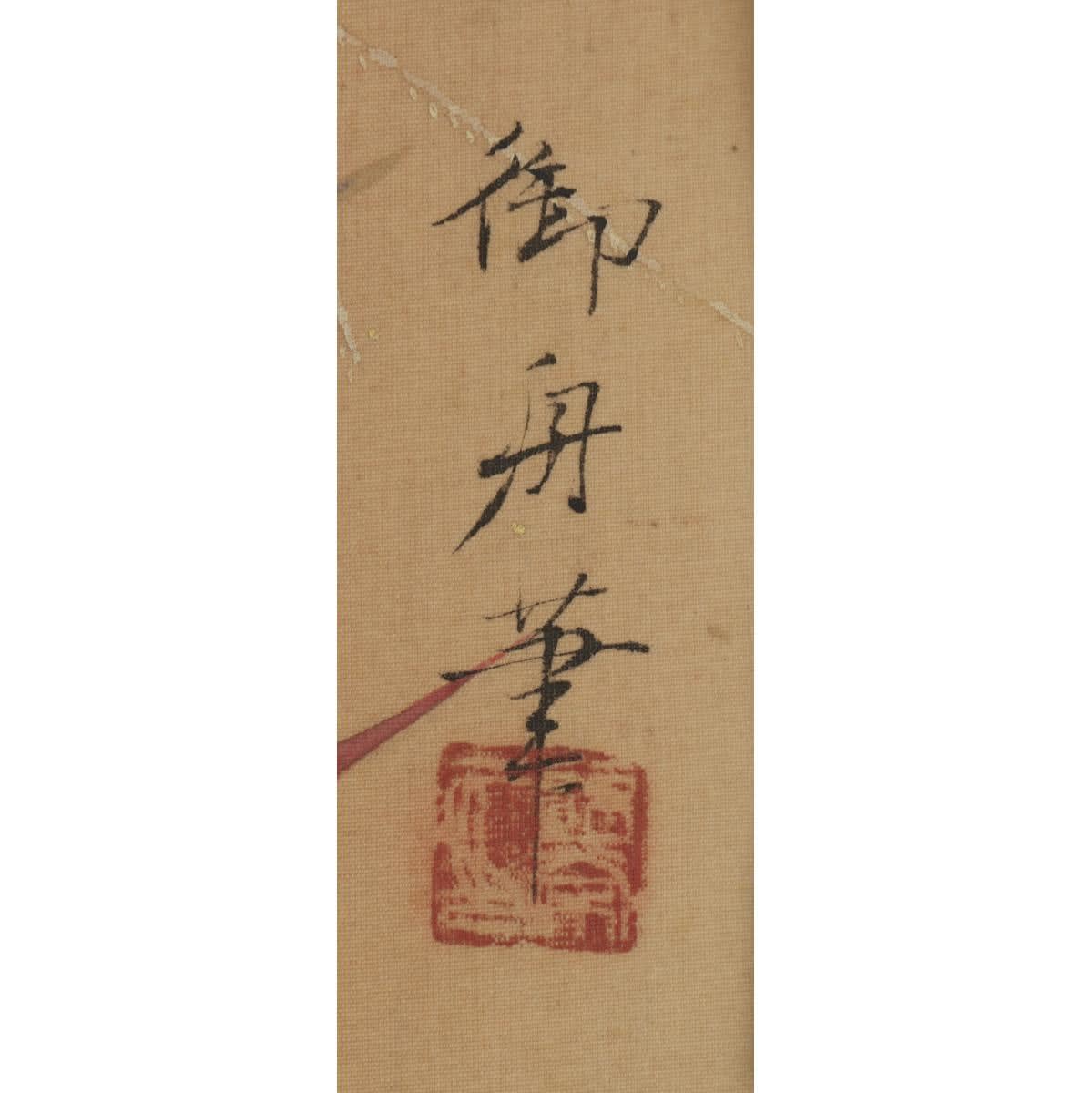Hayami Gyoshū (1894−1935)
Coming of Autumn
Color and gold on silk, hanging scroll
With box authentication by Kobayashi Kokei (1883-1957), double boxed
Seal: Sokuei in
131 x 42.5 cm
226 x 57 cm (overall)
With box authentication by Kobayashi Kokei (1883-1957), double boxed
Seal: Sokuei in
131 x 42.5 cm
226 x 57 cm (overall)
Further images
Exhibitions
Hayami Gyoshu no geijutsu ten. Kyoto: The National Museum of Modern Art, Kyoto, 1980.Literature
Gyoshu sakuhin-shu chusaku-hen. Tokyo: Benrido, 1970.Hayami Gyoshu. Tokyo: Benrido, 1975.
Hayami Gyoshu taisei. vol. 3. Tokyo: Shogakukan, 1999.
The flaming red plumed cockscombs stand upright in an imposing manner, imparting an atmosphere of awe. Next to the sharp-edged leaves of plumed cockscombs, the soft green foxtail is gently leaning upon. The whole painting is immersed in an autumnal, clear air. In 1921, Hayami Gyoshu, on the occasion of marriage, left Kyoto where he had lived for three years and a half, relocating to Tokyo for a new life in both public and private. This painting was executed through Gyoshu’s eyes with the elaborate, realistic depiction—an approach mainly used between Taisho and Showa periods. Be it flowers, grasses, insects, or even the whole nature, Gyoshu focused his eyes on the inner vitality of life itself.
In Japan, there is a most-liked children’s song titled “Red Dragonfly,” in which the lyrics was written a remembrance of Hyogo-born lyricist Miki Rofu (1889−1964)’s childhood, and the song was composed by Yamada Kosaku (1886−1965). The lyrics itself was included in Miki’s children’s books kashi no ki and Shiju shima in 1921, describing an atmosphere of Japan of the time. This painting was executed in about the same time, reflecting a sense of nostalgia which transcends generations. Although the present work is moderate in terms of theme and composition, we are confident to say this masterpiece equals to other highly accomplished works of his own.
Hayami Gyoshu (nihonga painter; 1894−1935)
Also known as Kako; Konen.
Tokyo-born nihonga painter. His real name is Makita Eiichi. Studied under Matsumoto Fuko at Anagado-gajuku, and later was invited to join Songa-kai and Ugo-kai. Active at Koji-kai and Sekiyo-kai. Exhibited at Inten. Innovatively infused modernity into the decorative nihonga genre. Received orders of merit from the Italian and German governments.
In Japan, there is a most-liked children’s song titled “Red Dragonfly,” in which the lyrics was written a remembrance of Hyogo-born lyricist Miki Rofu (1889−1964)’s childhood, and the song was composed by Yamada Kosaku (1886−1965). The lyrics itself was included in Miki’s children’s books kashi no ki and Shiju shima in 1921, describing an atmosphere of Japan of the time. This painting was executed in about the same time, reflecting a sense of nostalgia which transcends generations. Although the present work is moderate in terms of theme and composition, we are confident to say this masterpiece equals to other highly accomplished works of his own.
Hayami Gyoshu (nihonga painter; 1894−1935)
Also known as Kako; Konen.
Tokyo-born nihonga painter. His real name is Makita Eiichi. Studied under Matsumoto Fuko at Anagado-gajuku, and later was invited to join Songa-kai and Ugo-kai. Active at Koji-kai and Sekiyo-kai. Exhibited at Inten. Innovatively infused modernity into the decorative nihonga genre. Received orders of merit from the Italian and German governments.











